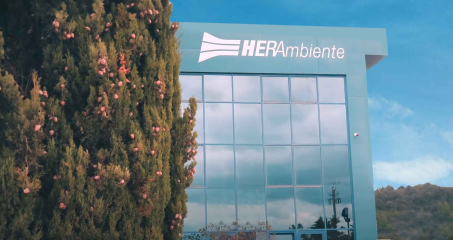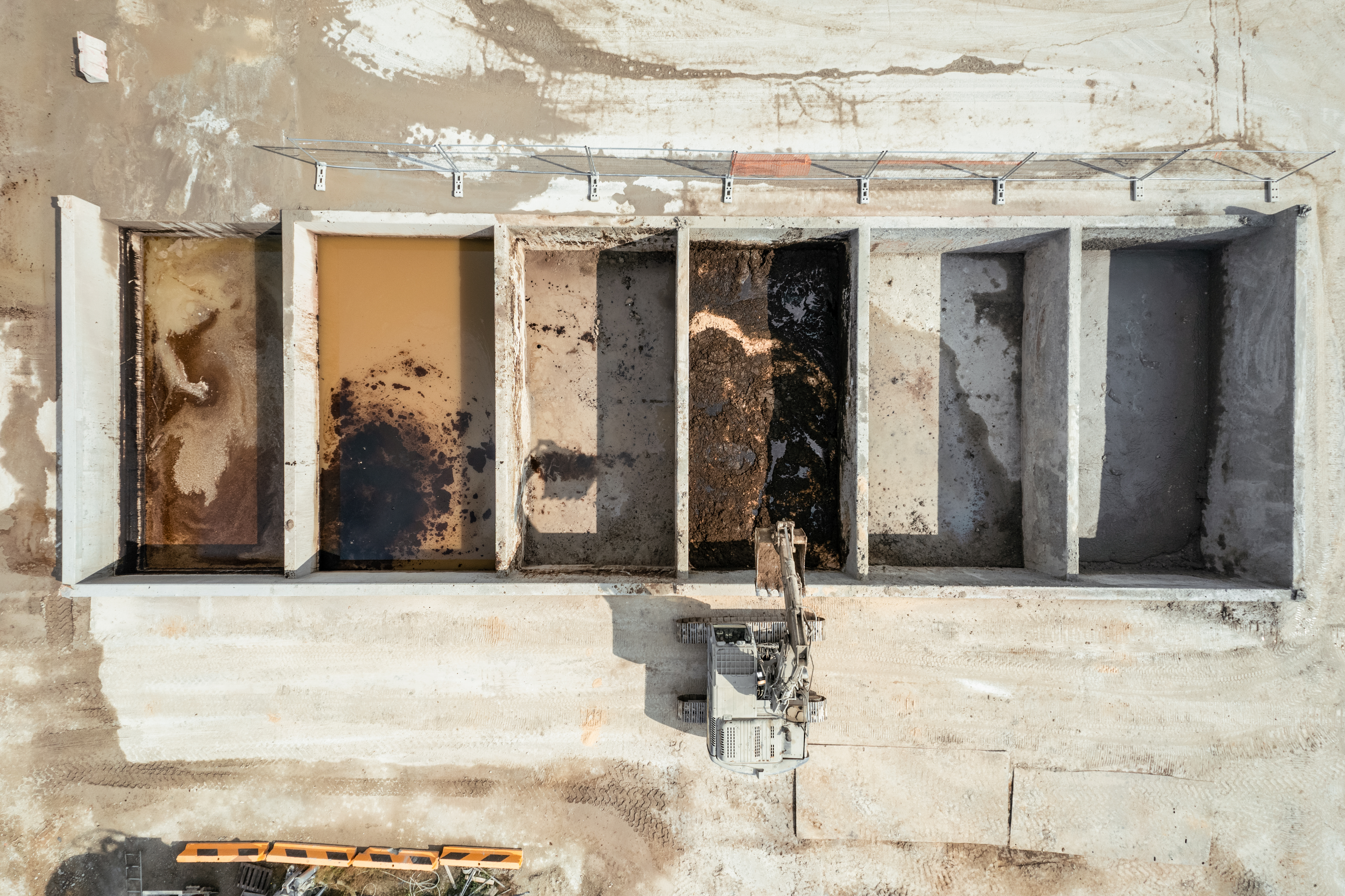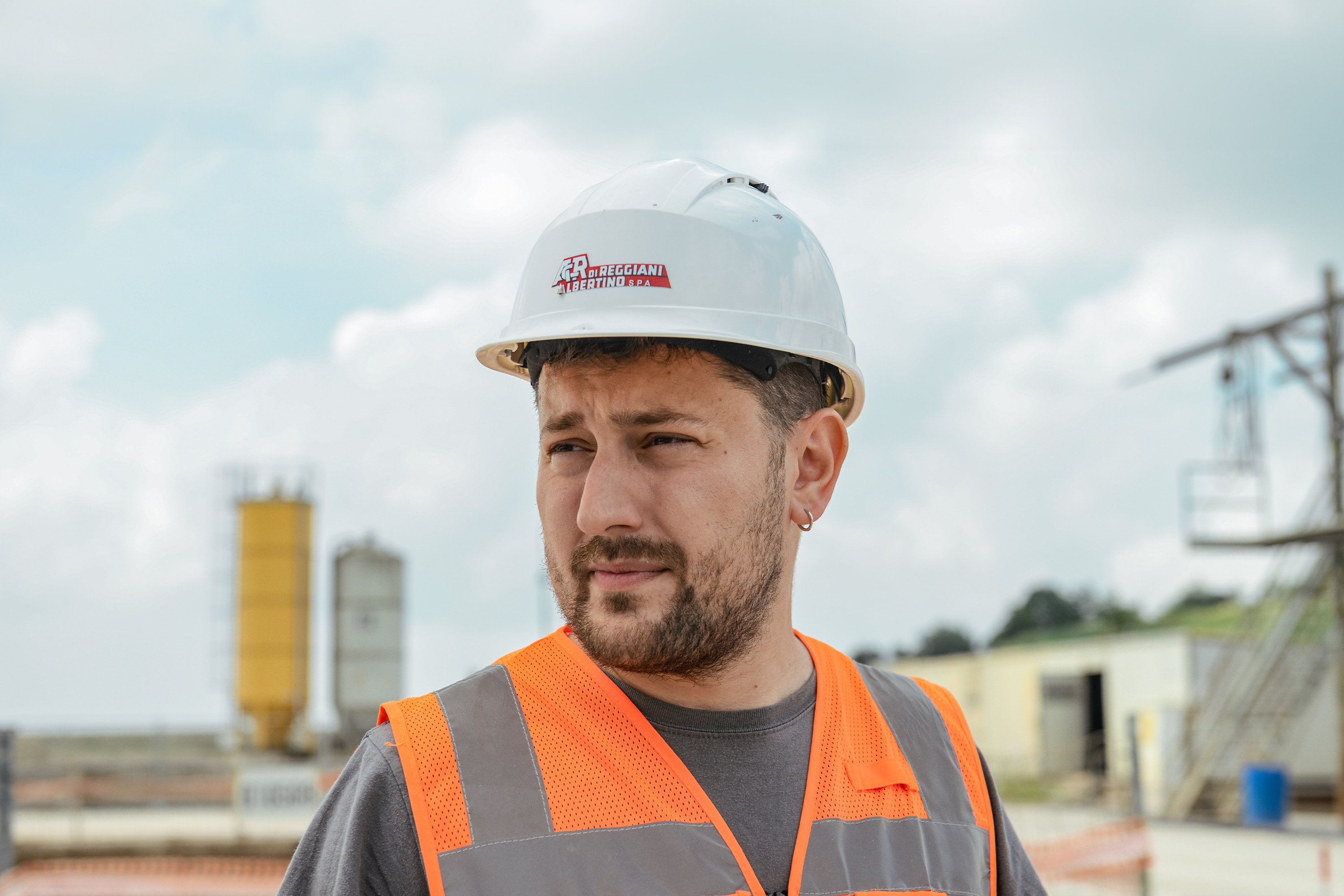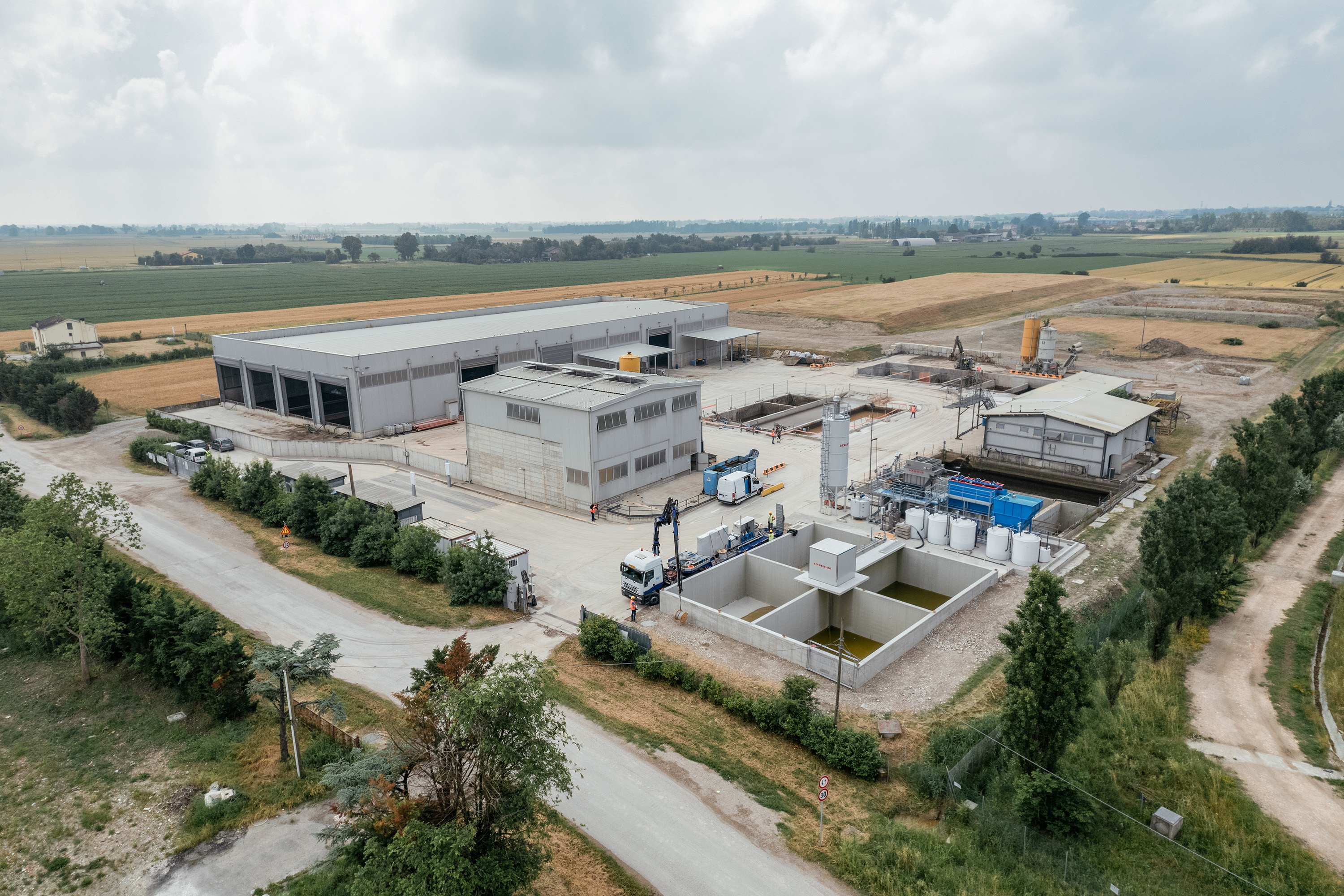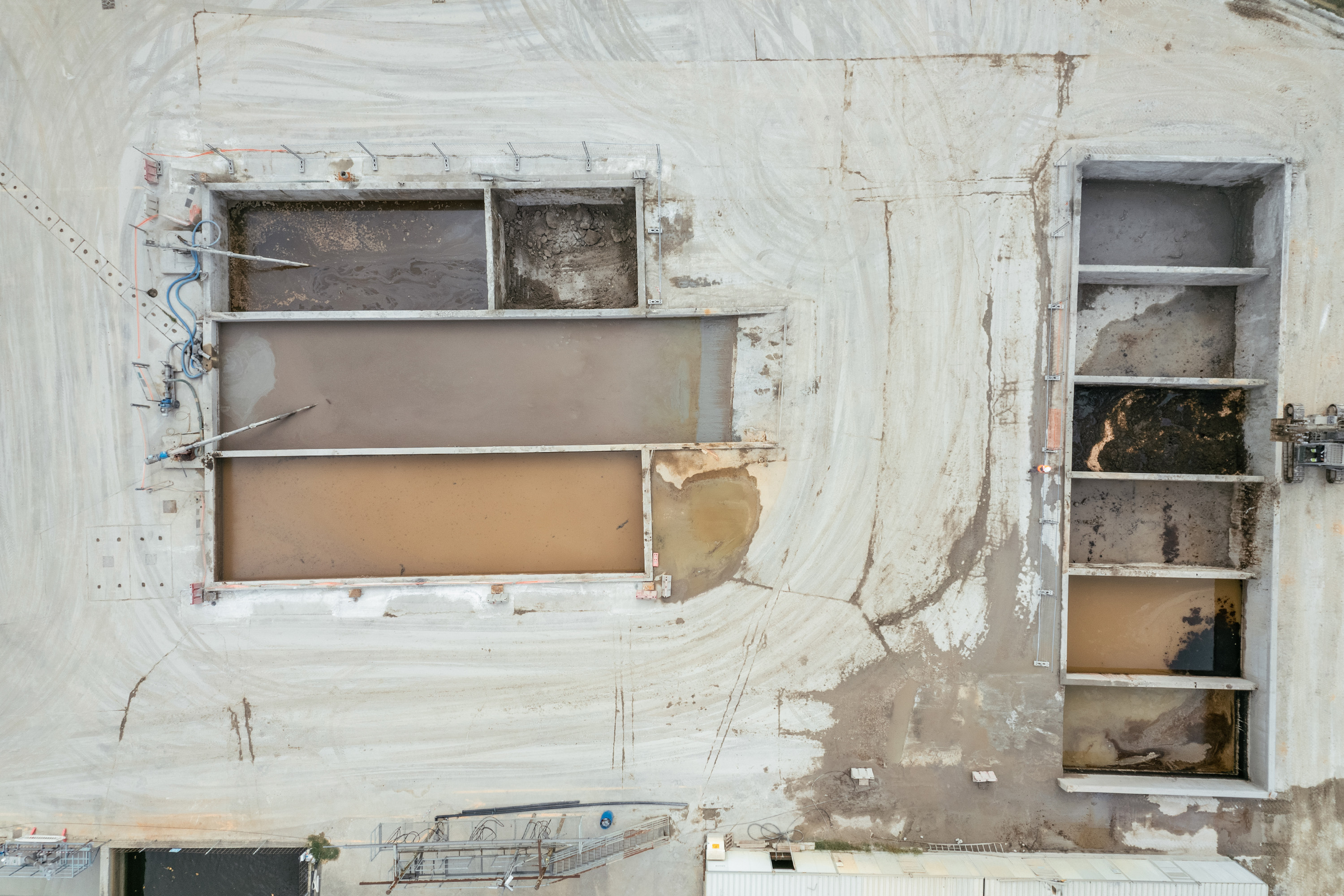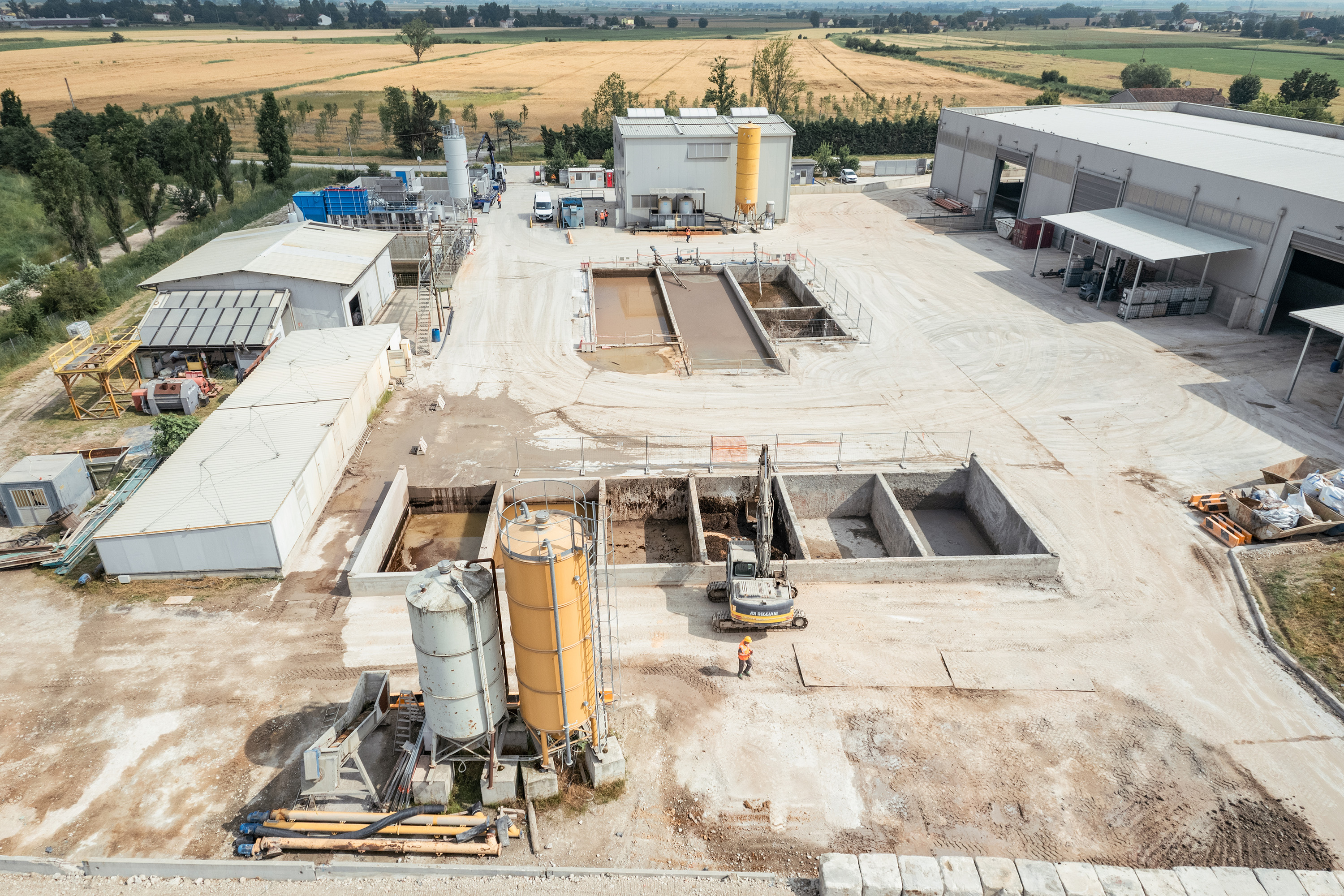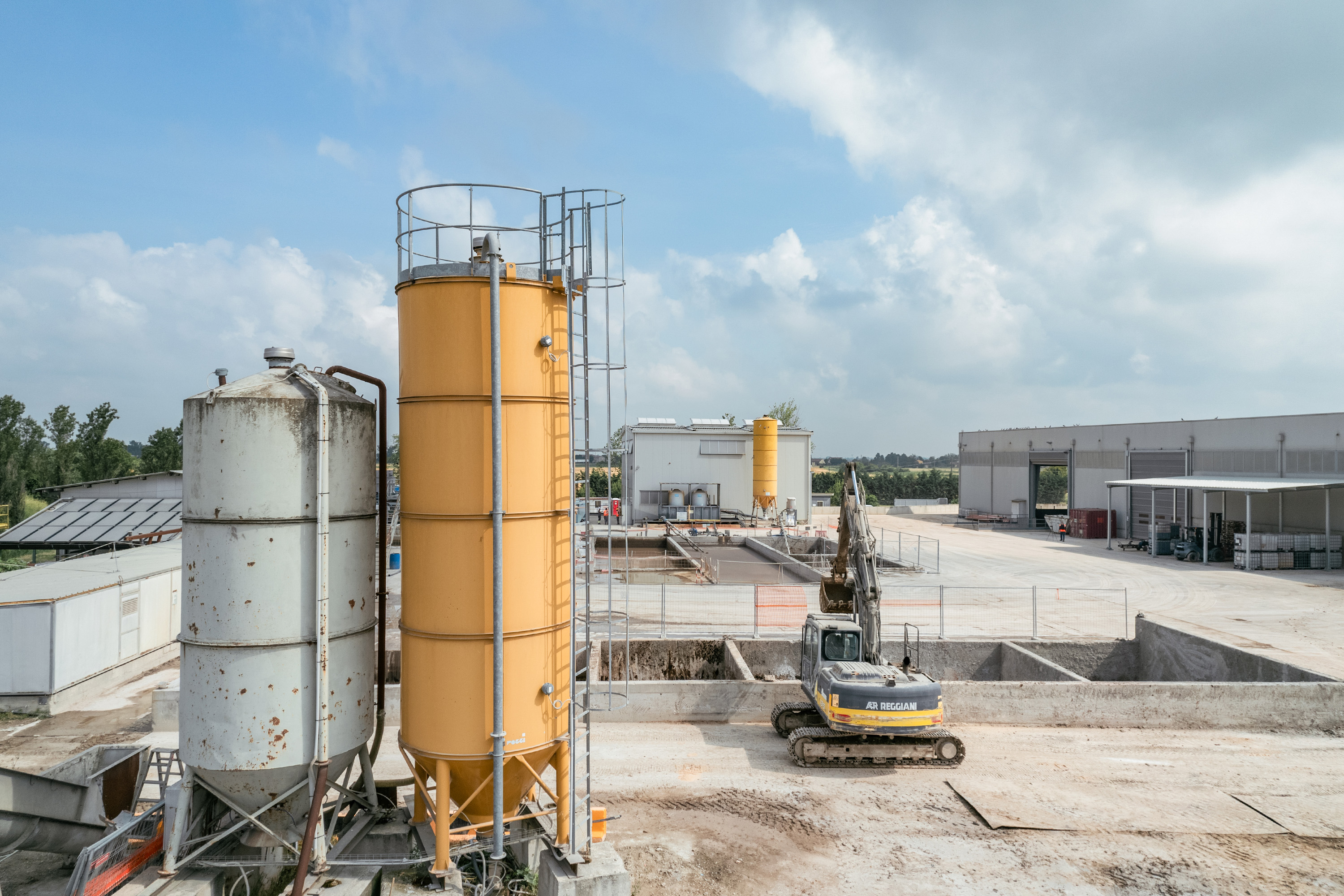Overview
The facility treats solid, liquid and muddy waste of industrial origin, even hazardous produced by third parties and delivered in bulk or in packages. These wastes consist largely of drilling or water treatment muds, oily sludge, and tank bottoms that must be treated before being sent to final disposal facilities.
The Mirandola plant completes the treatment of industrial waste through the process of filter pressing or inerting, and the disposal of liquid waste through the process of filter pressing and passing through a reverse osmosis plant. The plant has a processing capacity of 80,000 tons per year.
The waste produced by the treatment process is then sent to final plants equipped with the best technologies for recovery or disposal; wastewater from the filtropressing process is, on the other hand, sent to physical chemical treatment plants or discharged into surface bodies.
Page updated January 25, 2023
- A sludge dewatering section consisting mainly of a filter press with 150 plates measuring 2 x 2 m, which are clamped with a hydraulic piston at 300 atmospheres and through which conditioned sludge is pumped at 16 atmospheres until the space between the plates is saturated with the solid phase of the sludge.
- An inerting section consisting of a mixing screw pump section, where muddy waste is mixed with chemicals for inerting and/or thickening depending on the desired purpose.
- A treatment line consisting mainly of a two stage reverse osmosis and of zeolite and activated carbon filters.
The system consists essentially of 3 treatment lines:


